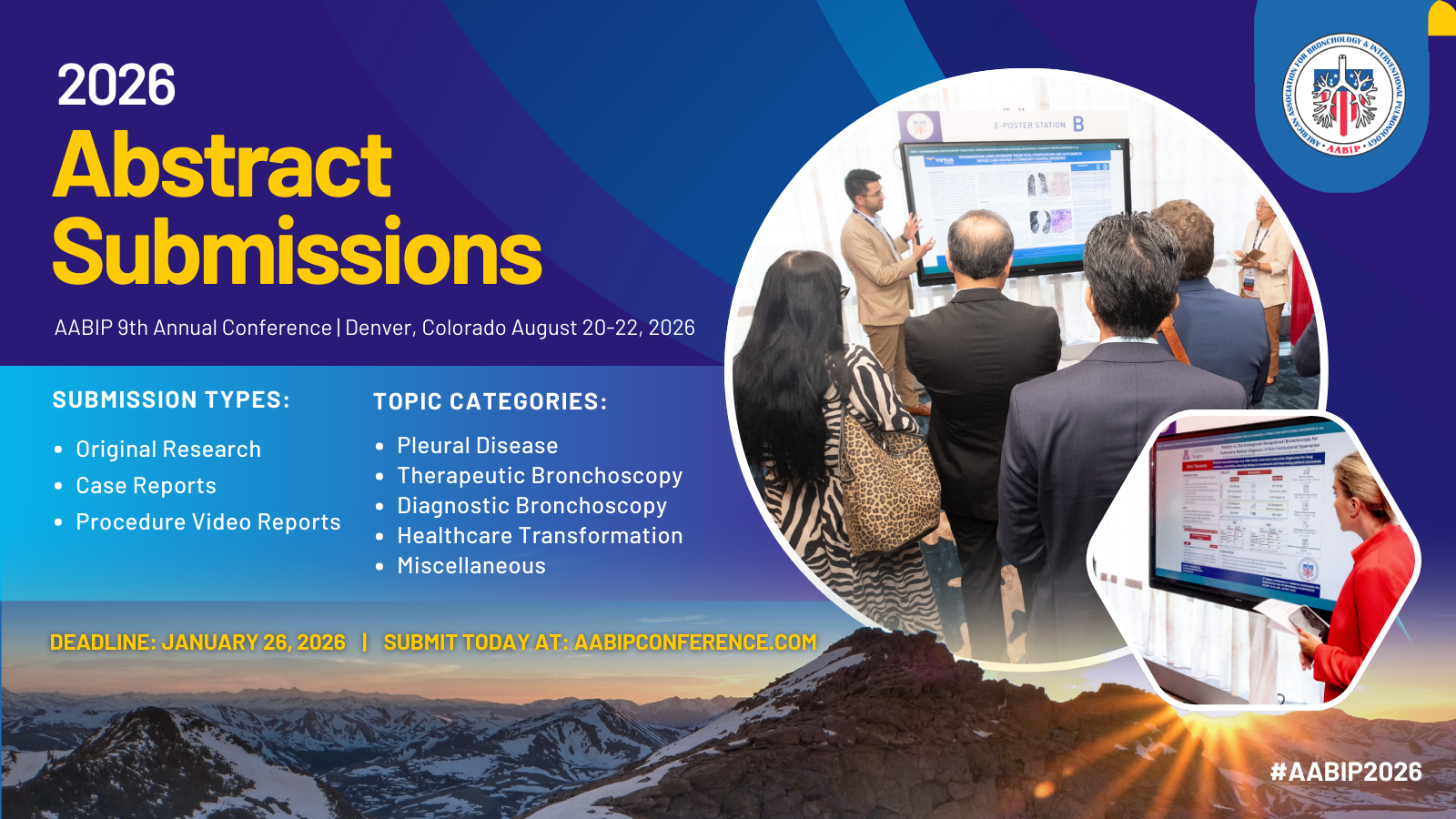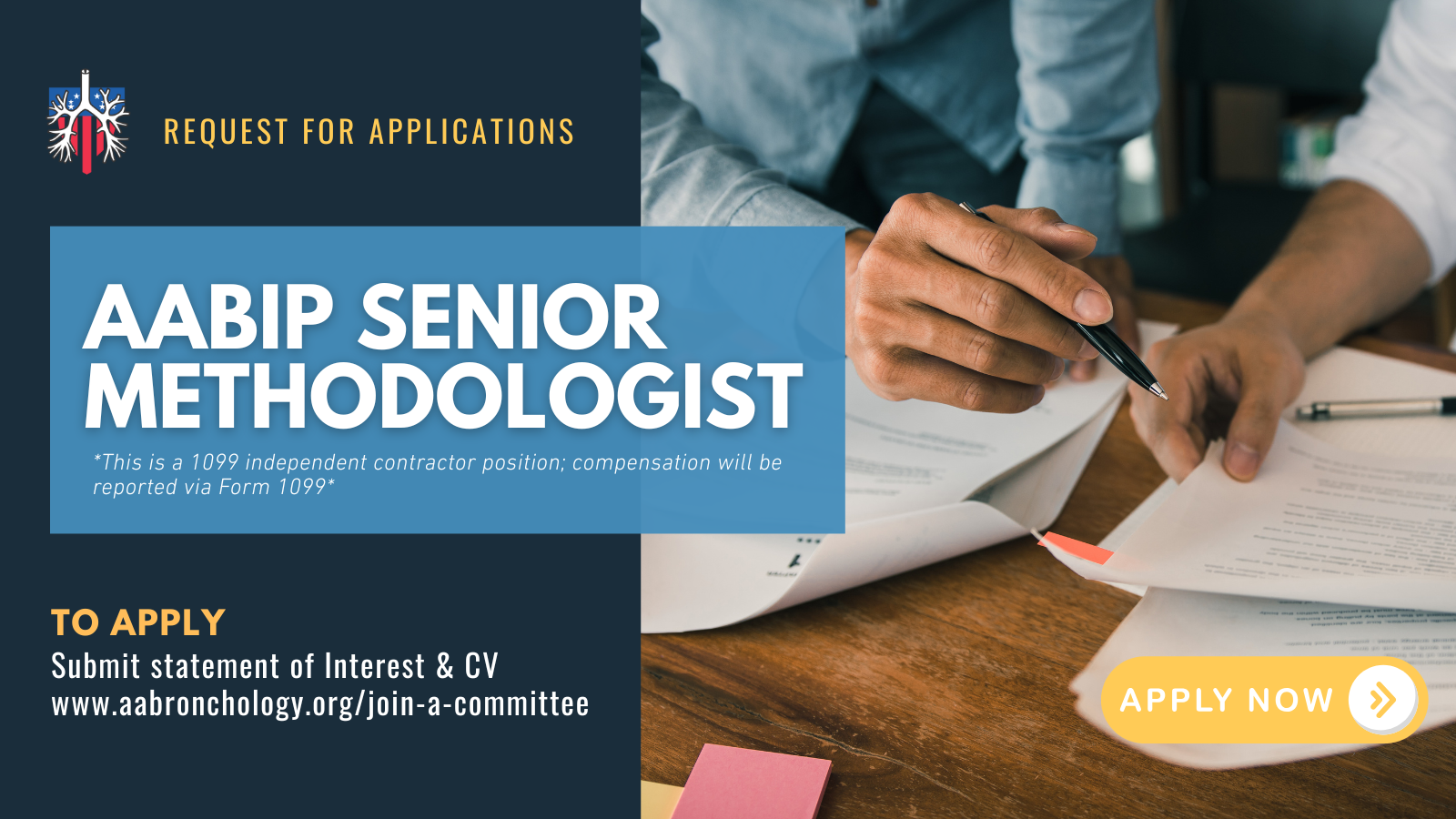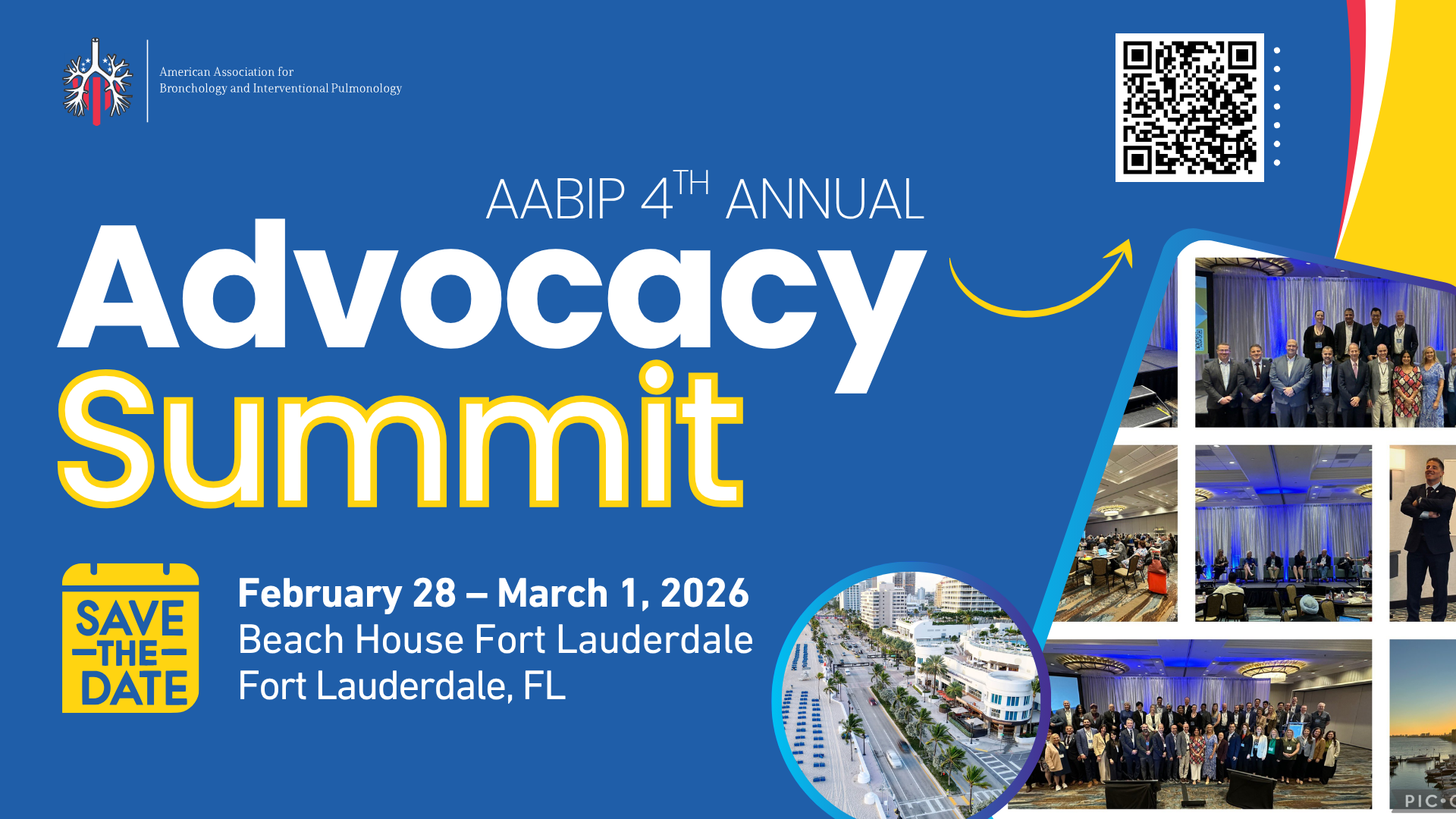Flexible Bronchoscopy
AABIP IP Fellows Reading ListBasic Bronchoscopy Safety of diagnostic flexible bronchoscopy in patients with echocardiographic evidence of pulmonary hypertension https://www.ncbi.nlm.nih.gov/pubmed/30366834 Retrospective Reference: Ishiwata T, Abe M, Kasai H, et al. Safety of diagnostic flexible bronchoscopy in patients with echocardiographic evidence of pulmonary hypertension. Respir Investig. 2019;57(1):73-78. Background: Pulmonary hypertension (PH) and anticoagulation could increase risks of hemodynamic complications and bleeding with bronchoscopic procedures. This study assessed safety of diagnostic bronchoscopy procedures in patients with pulmonary hypertension. PICO:
Take Home: Diagnostic procedures can be safely performed in patients with echocardiographic evidence of PH, but comorbidities and individual risk factors need to be taken into account during pre-procedural risk stratification. British Thoracic Society guideline for diagnostic flexible bronchoscopy in adults https://pubmed.ncbi.nlm.nih.gov/23860341/ Reference: Du Rand IA, Blaikley J, Booton R, et al. British Thoracic Society guideline for diagnostic flexible bronchoscopy in adults: accredited by NICE. Thorax. 2013;68 Suppl 1:i1-i44. Summary: This is the 2013 British Thoracic Society guideline for diagnostic bronchoscopy and covers topics in basic diagnostic bronchoscopy for adult patients including patient monitoring, precautions, contraindications, complications, sedation and premedication, bronchoscopy for specific patient groups, cleaning and handling of equipment, staffing, diagnostic accuracy for specific procedures, and patient satisfaction and care. https://www.ncbi.nlm.nih.gov/pubmed/29433707 Review Reference: Miller RJ, Casal RF, Lazarus DR, Ost DE, Eapen GA. Flexible Bronchoscopy. Clin Chest Med. 2018;39(1):1-16. Summary: Diagnostic techniques include bronchial washings, bronchoalveolar lavage, brushing, TBNA, forceps biopsies, core needle biopsies, and cryobiopsy. Each method of sampling has its own indication, risks, unique instruments, and diagnostic yield and a combination of modalities is recommended to increase diagnostic capabilities. While there are relatively few absolute contraindications to flexible bronchoscopy, a thorough evaluation of the indications, benefits, and risks in context of a patient’s clinical condition and comorbidities is essential prior to performing the procedure. Sedation in Bronchoscopy: A Review https://www.ncbi.nlm.nih.gov/pubmed/29433726 Review Reference: Mccambridge AJ, Boesch RP, Mullon JJ. Sedation in Bronchoscopy: A Review. Clin Chest Med. 2018;39(1):65-77. Summary: Use of sedation during bronchoscopy has become commonplace and is used in addition to topical anesthesia. A combination of opioids and benzodiazepines is common, although use of other agents such as propofol, ketamine, and other agents are also popular depending on the operator’s experience. There is no standardized sedation practice so choice depends on patient factors, experience of the bronchoscopist, and safety and efficacy profile of the agents used. The role of bronchoscopy in the diagnosis of airway disease https://www.ncbi.nlm.nih.gov/pubmed/28149583 Review Reference: Paradis TJ, Dixon J, Tieu BH. The role of bronchoscopy in the diagnosis of airway disease. J Thorac Dis. 2016;8(12):3826-3837. Summary: Provides information on utility of bronchoscopy, sizing of usual bronchoscopes, and anesthetic options from an anesthesia and cardiothoracic perspective. Also provides a discussion of rigid bronchoscopy, endobronchial ultrasound, navigational bronchoscopy. Bronchoscopy Education: An Experiential Learning Theory Perspective https://www.ncbi.nlm.nih.gov/pubmed/29433728 Review Reference: Murgu SD, Kurman JS, Hasan O. Bronchoscopy Education: An Experiential Learning Theory Perspective. Clin Chest Med. 2018;39(1):99-110. Summary: Describes different learning theories and educational approaches to bronchoscopy and how to apply learned knowledge to clinical practice. Provides a good description of the Inverted Classroom and problem-based learning models as well as the importance and application of checklists in simulation-based training. Basic Bronchoscopy: Technology, Techniques, and Professional Fees https://www.ncbi.nlm.nih.gov/pubmed/30779915 Review Reference: Ninan N, Wahidi MM. Basic Bronchoscopy: Technology, Techniques, and Professional Fees. Chest. 2019;155(5):1067-1074. Summary: Discussion of bronchoscopic sampling techniques and their indications, limitations, and potential complications. Discussion of coding and billing for bronchoscopic procedures, including how to bill for multiple techniques within the same procedure. Update on tracheobronchial anatomy and flexible fiberoptic bronchoscopy in thoracic anesthesia https://www.ncbi.nlm.nih.gov/pubmed/19295287 Landmark Article/Review Reference: Campos JH. Update on tracheobronchial anatomy and flexible fiberoptic bronchoscopy in thoracic anesthesia. Curr Opin Anaesthesiol. 2009;22(1):4-10. Summary: Thorough knowledge of tracheobronchial anatomy is key when performing procedures as a bronchoscopist or interventionalist. This review provides a good description of tracheal and bronchial anatomy as well as descriptions of adequate placement of bronchial blockers, double-lumen endotracheal tubes. Risks of and recommendations for flexible bronchoscopy in pregnancy: a review https://www.ncbi.nlm.nih.gov/pubmed/15596701 Landmark Article/Review Reference: Bahhady IJ, Ernst A. Risks of and recommendations for flexible bronchoscopy in pregnancy: a review. Chest. 2004;126(6):1974-81. Summary: Provides a description of respiratory system changes during pregnancy including functional changes of homeostatic set points in the brain, anatomic/physiologic changes, and changes in pulmonary blood flow and gas exchange capacity. Describes risks of sedation medications, procedure itself, and provides useful tables describing recommendations for medications and indications for flexible bronchoscopy in pregnancy. Complications of bronchoscopy: A concise synopsis https://www.ncbi.nlm.nih.gov/pubmed/26557489 Review Reference: Stahl DL, Richard KM, Papadimos TJ. Complications of bronchoscopy: A concise synopsis. Int J Crit Illn Inj Sci. 2015;5(3):189-95. Summary: While there is no consensus on classification of bronchoscopic complications, reported complication rates of fiberoptic bronchoscopy are <0.1% to 11% and mortality is between 0 and 0.1%. The authors review mechanical and systemic complications of bronchoscopy. Complications and discomfort of bronchoscopy: a systematic review https://www.ncbi.nlm.nih.gov/pubmed/27839531 Review Reference: Leiten EO, Martinsen EM, Bakke PS, Eagan TM, Grønseth R. Complications and discomfort of bronchoscopy: a systematic review. Eur Clin Respir J. 2016;3:33324. Summary: Systematic review including 45 publications on complications of bronchoscopy. Mortality was low and hypoxemia, bleeding, pneumothorax, and fever showed considerable variability between publications. Discomfort was difficult to quantify. The authors concluded that more research on safety of bronchoscopy and predictors of complications and discomfort is needed. Bronchoscopes of the twenty-first century https://www.ncbi.nlm.nih.gov/pubmed/20172429 Landmark Reference: Yarmus L, Feller-kopman D. Bronchoscopes of the twenty-first century. Clin Chest Med. 2010;31(1):19-27, Table of Contents. Summary: Overview of different types of rigid and flexible bronchoscopy and their respective indications. Includes rigid bronchoscopy, endobronchial ultrasound, bronchoscopic navigation, autofluorescence bronchoscopy, narrow-band imaging, confocal fluorescence microendoscopy, optical coherence tomography. Forbearance With Bronchoscopy: A Review of Gratuitous Indications https://www.ncbi.nlm.nih.gov/pubmed/30171862 Review Reference: Deshwal H, Avasarala SK, Ghosh S, Mehta AC. Forbearance with Bronchoscopy: A Review of Gratuitous Indications. Chest. 2019;155(4):834-847. Summary: Review of literature resulting in a list of conditions for which bronchoscopy is often used but is of limited value. Discussion of whether bronchoscopy is the appropriate evaluation for such conditions. The utility of bronchoscopy in immunocompromised patients: a review https://www.ncbi.nlm.nih.gov/pubmed/32030281 Review Reference: Morton C, Puchalski J. The utility of bronchoscopy in immunocompromised patients: a review. J Thorac Dis. 2019;11(12):5603-5612. Summary: Outlines diagnostic rate of transbronchial biopsy in different immunocompromised patient populations including solid organ transplant, hematopoietic stem cell and hematologic malignancies, HIV, medication-induced immunosuppression and chemotherapy, along with primary immunodeficiency disorders. Discusses timing of bronchoscopy, potential complications, non-invasive testing, and future areas of research in the context of the immunosuppressed patient with abnormal chest imaging. Essentially, early bronchoscopy can be helpful, complications generally mirror those of the general population but individualized decisions based on clinical judgement are necessary. Latrogenic bleeding during flexible bronchoscopy: risk factors, prophylactic measures and management https://pubmed.ncbi.nlm.nih.gov/28656131/ Review Reference: Bernasconi M, Koegelenberg CFN, Koutsokera A, et al. Iatrogenic bleeding during flexible bronchoscopy: risk factors, prophylactic measures and management. ERJ Open Res. 2017;3(2):00084-02016. Summary: This review provides a concise overview of the incidence, severity, and risk factors for iatrogenic bleeding, advice on prophylactic measures, and an action plan for significant bleeding. Diagnostic yield and bleeding complications associated with bronchoscopic biopsy of endobronchial carcinoid tumors https://pubmed.ncbi.nlm.nih.gov/31876538/ Retrospective Reference: Gao Y, Moua T, Midthun DE, Mullon JJ, Decker PA, Ryu JH. Diagnostic yield and bleeding complications associated with bronchoscopic biopsy of endobronchial carcinoid tumors. J Bronchology Interv Pulmonol. 2020;27(3):184-189. Background: Although bronchial carcinoid can appear hypervascular and may be associated with hemoptysis, the diagnostic yield and bleeding complications associated with endobronchial biopsy are unclear. PICO:
Take home: Bronchoscopic biopsy of endobronchial carcinoid is associated with high diagnostic yield and severe bleeding is rare. Complications following therapeutic bronchoscopy for malignant central airway obstruction: results of the AQuIRE registry https://pubmed.ncbi.nlm.nih.gov/25741903/ Retrospective Background: There is significant variation in how therapeutic bronchoscopy for malignant airway obstruction is performed and few studies have compared how these approaches affect the incidence of complications. PICO:
Take home: There is practice variation among centers. Use of moderate sedation was associated with increased complications. Stent use was associated with increased 30-day mortality. |








